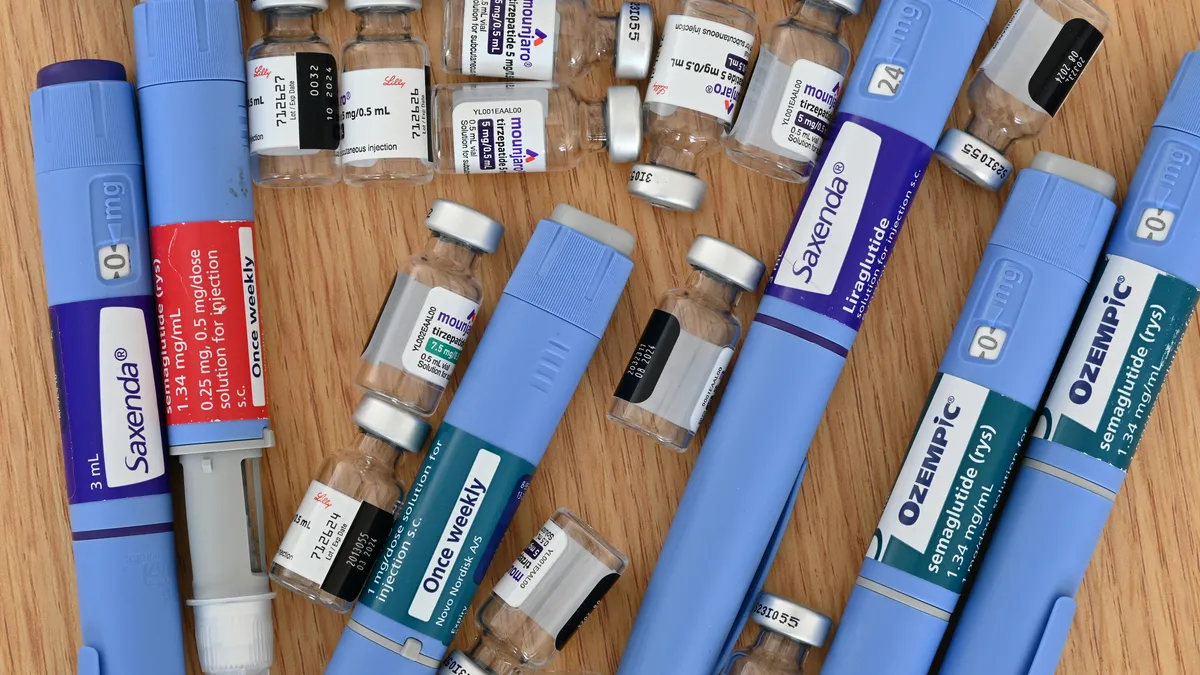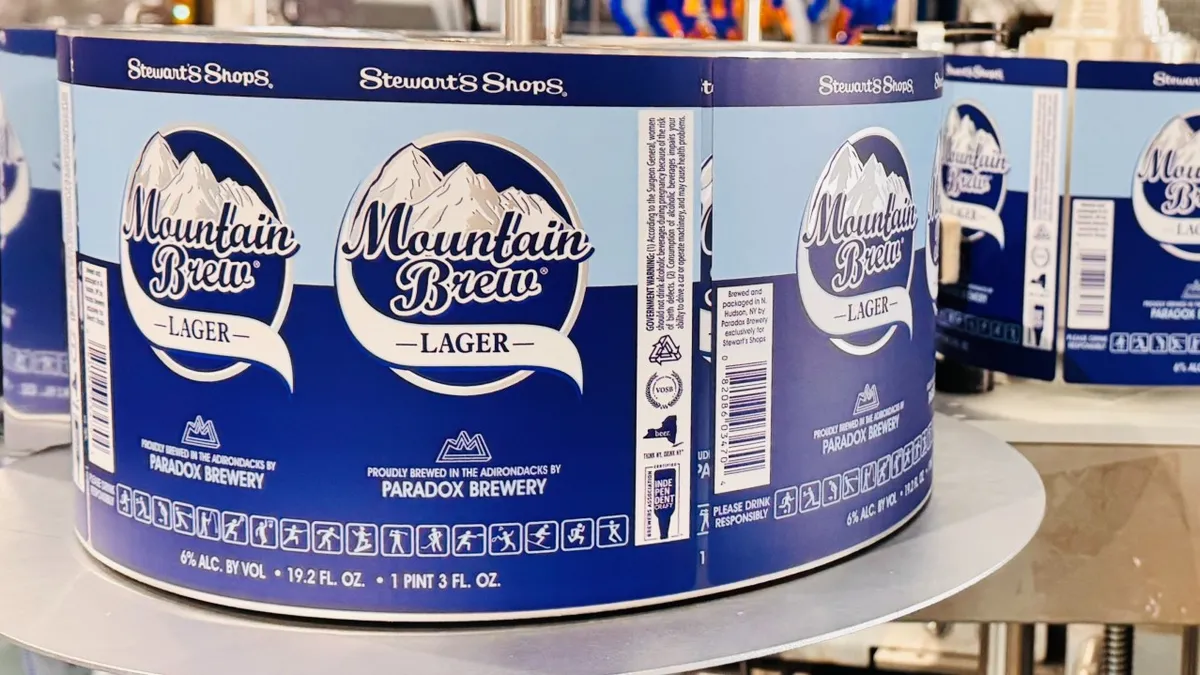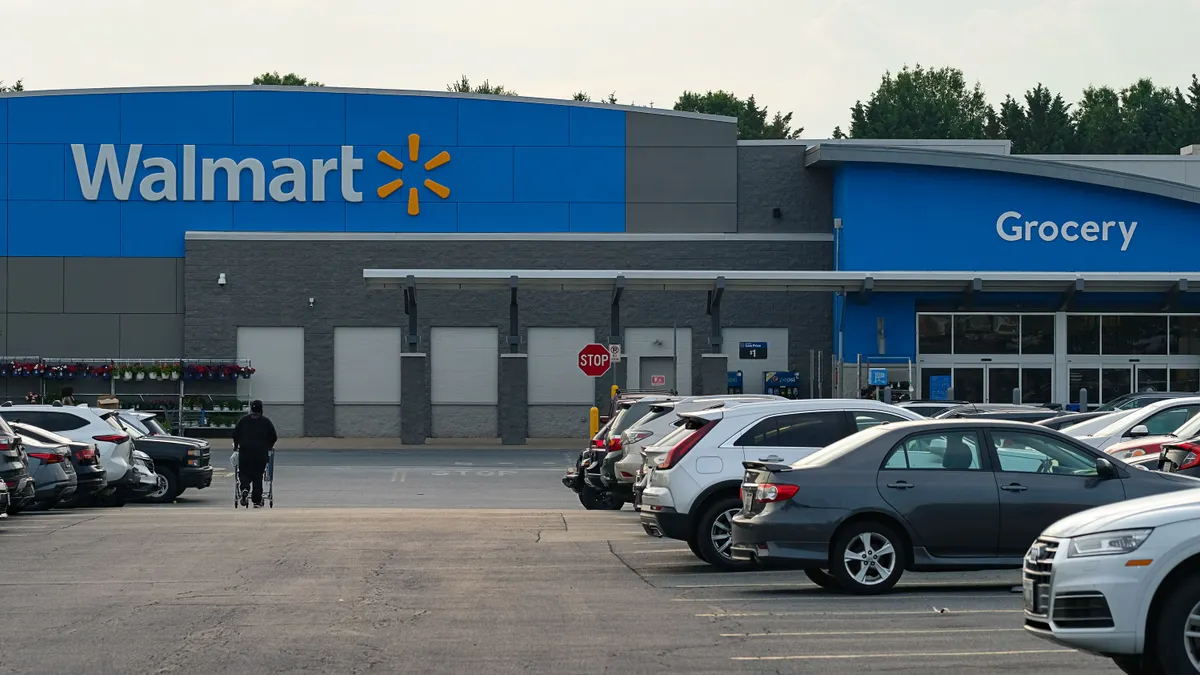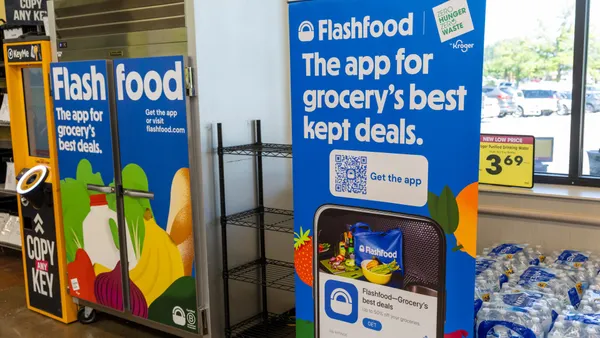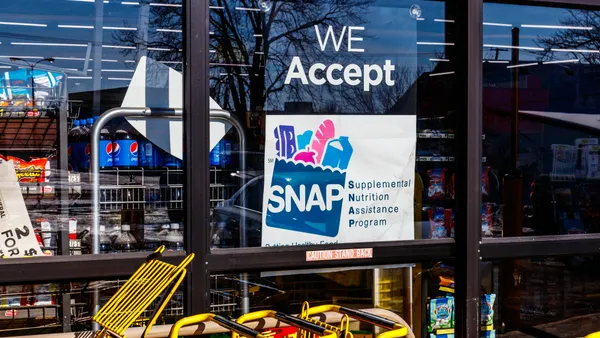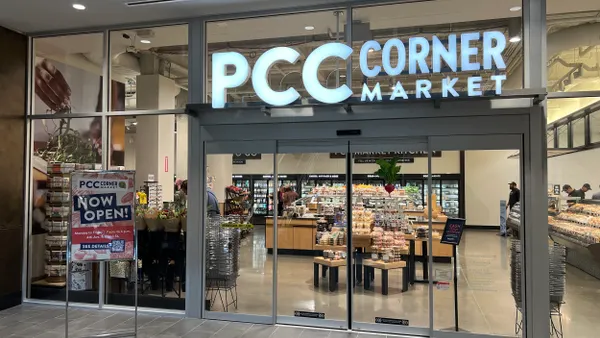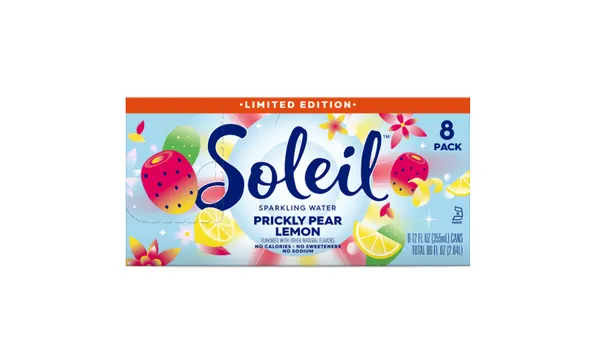The shopping and eating behaviors of consumers taking GLP-1 medications are poised to impact grocers in multiple ways as usage of the weight-loss drugs continues to rise, new research indicates.
A new report from Circana found that GLP-1 shoppers shift their food purchases and consumption during their first three months on the medication — and that their behavior during that period differs starkly from how they act in later months. People who take the drugs for weight loss specifically spend less on foods and beverages than people who use them for other reasons, such as treating diabetes, Circana consultant DJ Joyner said during a Wednesday webinar.
In a positive sign for grocers GLP-1 users during their first year on the medication increased spending on grocery foodservice and pull back on quick-service restaurants and food at convenience stores, the research found.
Twelve percent of adults said they have taken a GLP-1 drug, according to a survey of 1,479 U.S. adults last spring by policy research firm KFF cited by Circana.
GLP-1 users currently account for nearly 8% of food and beverage units sold, with Circana estimating that figure — if current trends continue — could climb to approximately 13% by 2034. Availability, accessibility and affordability are increasing for GLP-1s, Sally Lyons Wyatt, global executive vice president and chief advisor of Circana, said during the webinar.
The rising usage of GLP-1s also ties into a broader focus by shoppers on connecting food with their health goals, the research firm noted.
“Retailers and brands really have to be looking at GLP-1 as somewhat of a leading indicator of this larger cultural phenomenon and looking for ways to innovate and reach this growing population of consumers who are looking for healthy benefits from the products they buy,” Joyner said.
Here are takeaways from the report and webinar that grocers can use to help determine merchandising and marketing tactics aimed at GLP-1 users.
Weight loss appears to be a driving factor for GLP-1 usage
Circana research in September found that 56% of GLP-1 users were not diabetic, indicating that weight management is a driving factor for people to use the drugs, Joyner said.
While people can take GLP-1s for a variety of reasons — from control of blood sugar levels for diabetes to heart disease management to weight loss — those who take it for weight loss spend less at CPG retail than other people on diets, Circana found.
“Weight loss drugs are going to be one of the biggest consumer stories we're following in 2025,” Joyner said.
Circana found key differences between people who use GLP-1s for weight loss and those who take it for other reasons, Joyner said. Weight-loss users were more likely to be millennials, part of larger households with children and urban dwellers in addition to falling into the upper or lower ends of the income scale, Joyner said.
Joyner noted that GLP-1 users focused on losing weight expect to be on the drugs for a shorter period of time.
“Any consumer-facing company that’s adjusting product and marketing strategies in response to the rise in usage rates we’re seeing for these drugs should also be taking into account that a larger underlying user base means that we’ll be seeing a growing number of consumers who are also stopping and ceasing these drugs over time as well,” Joyner said.
GLP-1 usage impacts grocery shopping
Circana’s research found that GLP-1 shoppers spend more money on recommended foods and foods that help relieve side effects from the medication. At the same time, they pull back on items healthcare experts recommend they avoid while taking GLP-1s, including spicy foods, fatty proteins, beverages with added sugar, dried meat snacks and alcohol.
Items like gum and salad dressing see big spending changes by GLP-1 users
Nonfood items are also impacted, with categories like oral care, drinkware, fitness trackers, cosmetics and certain types of apparel like jeans seeing increased spending by GLP-1 users, Circana found.
Purchase behaviors can also change over time. During the first three months of GLP-1 usage, spending dips for food both at and away from home, but then usually returns to the baseline after the third month and can see upticks in later months. For those initial months, some categories like frozen and beverages see fewer trips by GLP-1 users, while deli and produce see upticks, Circana research found.
“The benefits of GLP-1 towards produce and deli at retail are strong,” Lyons Watt said. “So these departments show increasing in purchasing — not just for the first few months, but throughout the entire first year.”
High-protein, ready-to-eat meals and portion-controlled snacks are also well-positioned to meet the needs of GLP-1 users, creating opportunities for category growth, the research found.
Most GLP-1 users experience side effects
Side effects are common on GLP-1s and can include abdominal pain, constipation, diarrhea, nausea or pancreatitis based on the type of medication, Joyner said.
“In addition to thinking about how GLP-1 drugs might directly impact some longer-term demand for certain categories of food and beverages, there’s also a major opportunity for marketers to innovate messaging product offerings to address consumers who may be suffering from some of these negative side effects,” Joyner said.
For example, GLP-1 users are spending more on products like gum for bad breath or tea to calm their stomachs, Circana’s research found.
GLP-1 weight loss users shift where they shop
Circana is also seeing evidence that people who use GLP-1s for weight loss shift where they make purchases during their first year on the drugs.
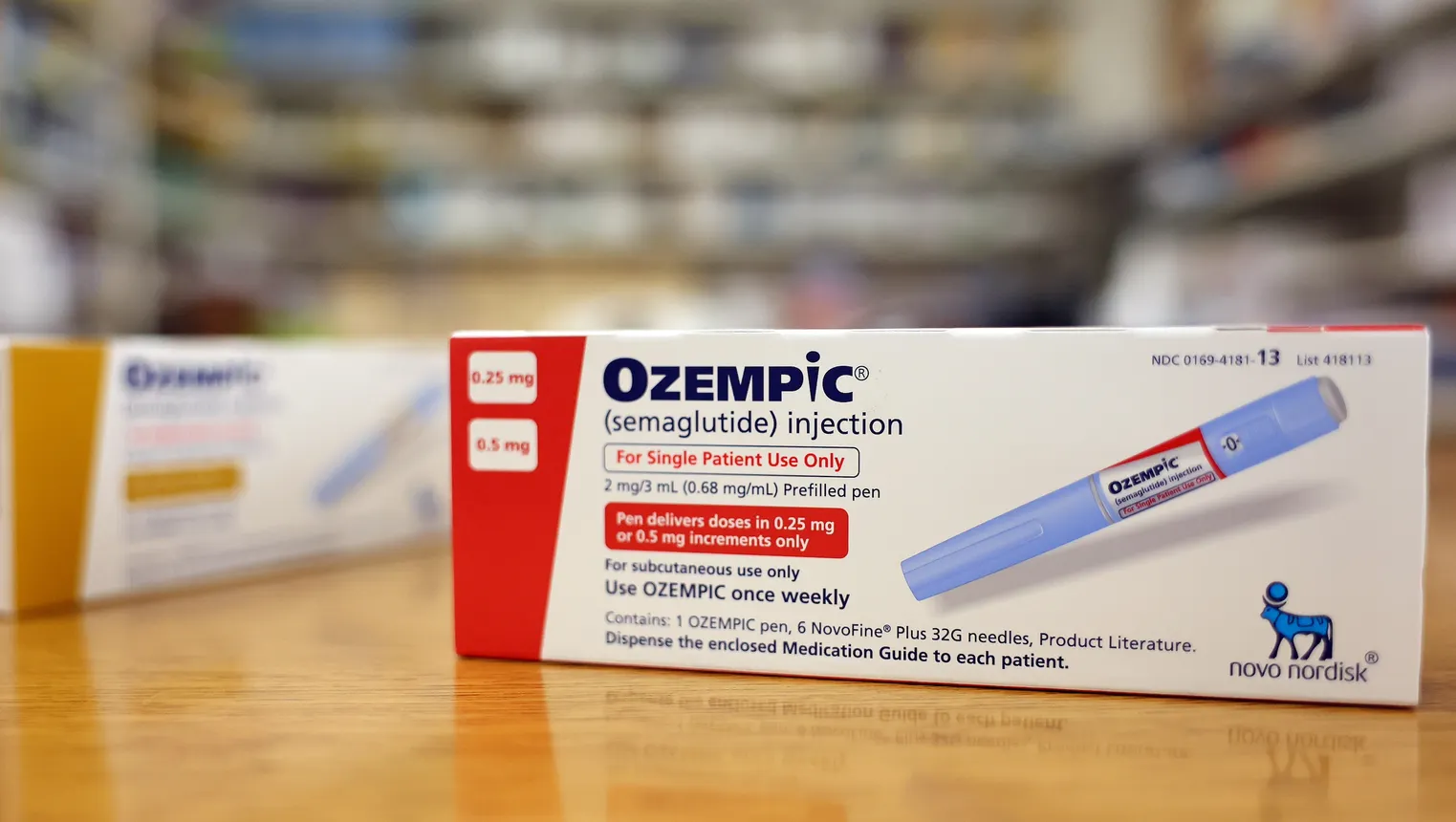
One year after starting the medication, people spend more at club retailers, value grocers, drug stores and pure-play e-commerce channels and purchase less at traditional grocers, mass retailers and convenience stores, Joyner noted during the webinar.
“GLP-1 households tended to be heavier-than-average spenders at most channels before starting GLP-1 drugs, and they still continue to over-index non-users at these channels on a per-household basis,” Joyner said.
Retailers and CPGs can do more to appeal to GLP-1 users
Companies need to have a strategy for catering to GLP-1 users and understand the types of medications and reasons for taking the drugs, Lyons Watt said, adding that the needs of consumers with diabetes could differ from someone using GLP-1s for weight loss.
Circana recommends that CPGs offer products that align with weight-management needs as well as provide nutrition, smaller portion sizes and relief from side effects — creating new merchandising and ad revenue opportunities for grocers. Brands can look to align product innovation and marketing toward GLP-1 users’ preferences for protein, vegetables and fruits as well as their efforts to reduce consumption of sugar, carbs and sodium, the firm noted.
Circana also recommends cross-sector collaboration between beauty, wellness and pharmaceuticals with the food and beverage industry. Food and beverage companies and grocers can work together to offer promotions and discounts on products that support GLP-1 users’ dietary needs, Circana said.
“Personalized messaging and targeting [are] critical because everyone is different given lifestyle, life, stage, disease, state and overall goals,” Lyons Watt said.



